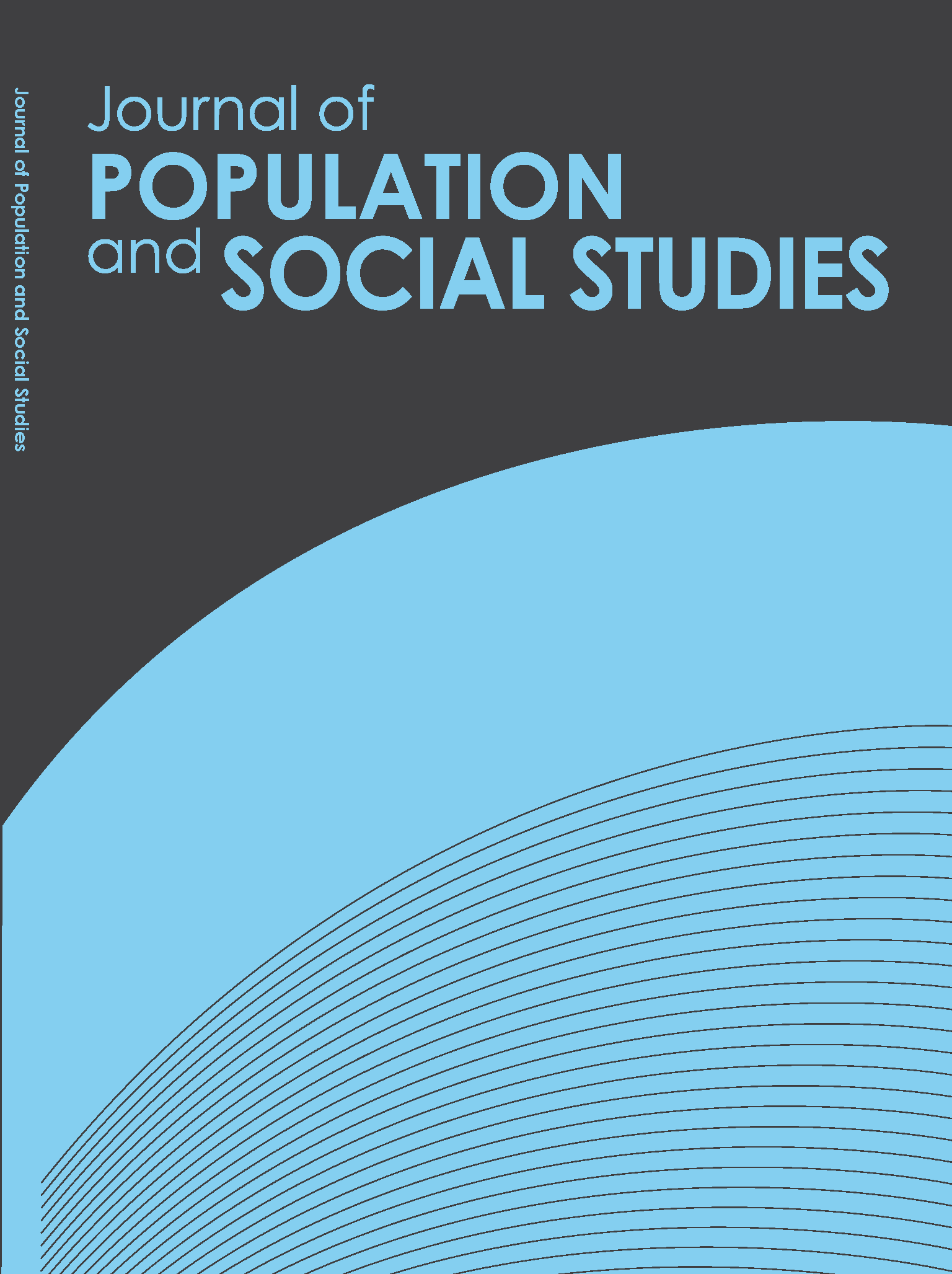Empowerment of Women Through Self-Help Groups in Nepal
Main Article Content
Abstract
The empowerment of women is not a new concept. However, it is still a challenging issue in most developing countries like Nepal. This study attempts to assess women’s empowerment through self-help groups (SHGs) in Nepal. Knowledge, association, and participation are the leading indicators to measure the effect of SHGs on women’s empowerment. Data for this study is entirely based on the Nepal Social Inclusion Survey 2018, comprising 16,329 currently married women aged 15–49 years. The binary logistic regression method has been used to show the effect of SHGs on women's empowerment. Findings show that women’s active participation in SHGs matters in empowering women. Women who participate in SHGs are more empowered than those who do not participate and have no knowledge of SHGs. The influence of participation is found more effective, especially in the sociocultural domain, than in the economic and political spheres. The findings further show a gap among women members. The reasons for this difference may vary because empowerment is contextual. Thus, the local government, civil society, and women activists need to realize women’s inclusion and active participation in SHGs.
Article Details

This work is licensed under a Creative Commons Attribution-NonCommercial-NoDerivatives 4.0 International License.
References
• Ban, R., Gilligan, M. J., & Rieger, M. (2020). Self-help groups, savings and social capital: Evidence from a field experiment in Cambodia. Journal of Economic Behavior & Organization, 180, 174–200. https://doi.org/10.1016/j.jebo.2020.09.029
• Bennett, L., Sijapati, B., & Thapa, D. (2012). Forging equal citizenship in a multicultural Nepal [Unpublished manuscript]. Kathmandu, Nepal.
• Brody, C., Hoop, T. D., Vojtkova, M., Warnock, R., Dunbar, M., Murthy, P., & Dworkin, S. L. (2016). Can self-help group programs improve women’s empowerment? A systematic review. Journal of Development Effectiveness, 9(1), 15–40. https://doi.org/10.1080/19439342.2016.1206607
• Central Department of Anthropology (CDA). (2018). Nepal Social Inclusion Survey 2018 [Data set]. Tribhuvan University. https://opendatanepal.com/dataset/datasets-from-status-of-social-inclusion-in-nepal-caste-ethnicity-and-gender-report
• Enslin, E. (1998). Imagined sisters: The ambiguities of women's poetics and collective actions. In D. Skinner, A. Pach III, & D. Holland (Eds.), Selves in time and place: Identities, experience, and history in Nepal (pp. 265–296). Rowman and Littlefield Publishers.
• Greaney, B., Kaboski, J. P., & Leemput, E. V. (2013). Can self-help groups really be "self-help"? (NBER Working Paper No. 18970). National Bureau of Economic Research. http://dx.doi.org/10.3386/w18970
• Hachhethu, K. (2003, April 24–26). The question of inclusion and exclusion in Nepal interface between state and ethnicity [Conference presentation]. The Agenda of Transformation: Inclusion in Nepali Democracy, Kathmandu, Nepal. https://silo.tips/download/the-question-of-inclusion-and-exclusion-in-nepal-interface-between-state-and-eth
• International Labour Organization. (2018). Care work and care jobs for the future of decent work. https://www.ilo.org/wcmsp5/groups/public/---dgreports/---dcomm/---publ/documents/publication/wcms_633135.pdf
• Irshad, I. A., & Bhat, A. A. (2015). The vitality and role of self-help groups (SHGs) in women upliftment: Special reference to Kashmir. International Journal of Research-Granthaalayah, 3(8), 105–110. https://doi.org/10.29121/granthaalayah.v3.i8.2015.2968
• Jakimow, T., & Kilby, P. (2006). Empowering women: A critique of the blueprint for self-help groups in India. Indian Journal of Gender Studies, 13(3), 375–400. https://doi.org/10.1177%2F097152150601300303
• Kabeer, N. (1999). Resources, agency, achievements: Reflections on the measurement of women's empowerment. Development and Change, 30(3), 435–464. https://doi.org/10.1111/1467-7660.00125
• Kabeer, N. (2001). Conflicts over credit: Re-evaluating the empowerment potential of loans to women in rural Bangladesh. World Development, 29(1), 63–84. https://doi.org/10.1016/S0305-750X(00)00081-4
• Kabeer, N. (2005). Gender equality and women's empowerment: A critical analysis of the third Millennium Development Goal. Gender & Development, 13(1), 13–24. https://www.jstor.org/stable/20053132
• Maiorano, D., Thapar-Björkert, S., & Blomkvist, H. (2016). The paradoxes of empowerment: Gendering NREGA in the rural landscape of India. Development in Practice, 26(1), 127–134. https://doi.org/10.1080/09614524.2016.1119805
• Malhotra, A., Schuler, S. R., & Boender, C. (2002). Measuring women's empowerment as a variable in international development. World Bank Workshop on Poverty and Gender: New Perspectives. https://www.empowerwomen.org/en/resources/documents/2013/10/measuring-womens-empowerment-as-a-variable-in-international-development?lang=en
• Maskey, S. (2014). Rethinking group-based development approach in Nepal: Ways forward. Nepal Journal of Social Science and Public Policy, 3(1), 49–64. https://doi.org/10.53037/na.v3i1.27
• Pettit, J. (2012, September 10-12). Empowerment and participation: Bridging the gap between understanding and practice [Paper presentation]. The UNDESA Expert Group Meeting. https://www.un.org/esa/socdev/egms/docs/2012/JethroPettit.pdf
• Shakya, K. (2014). Changing Gender Status: Achievements and challenges. In Population Monograph of Nepal (Vol. 2, pp. 221–272). Central Bureau of Statistics. https://nepal.unfpa.org/sites/default/files/pub-pdf/Population%20Monograph%20V02.pdf
• Trivelli, C., & Morel, J. (2019). Rural youth inclusion, empowerment and participation. International Fund for Agriculture Development (IFAD). https://www.ifad.org/documents/38714170/41187395/05_Trivelli+and+Morel_2019+RDR+BACKGROUND+PAPER.pdf/982ce510-b38f-017c-66e3-8f02208a8ded
• United Nations. (2018). UNDP support to the integration of gender equality across the SDGs, including Goal 5. https://www.undp.org/content/dam/undp/library/SDGs/5_Gender_Equality_digital.pdf
• United Nations Development Programme (UNDP). (1995). Human Development Report 1995. Oxford University Press. http://hdr.undp.org/sites/default/files/reports/256/hdr_1995_en_complete_nostats.pdf
• Wrigley-Asante, C. (2012). Out of the dark but not out of the cage: Women’s empowerment and gender relations in the Dangme West district of Ghana. Gender, Place & Culture, 19(3), 344–363. https://doi.org/10.1080/0966369x.2011.572435


